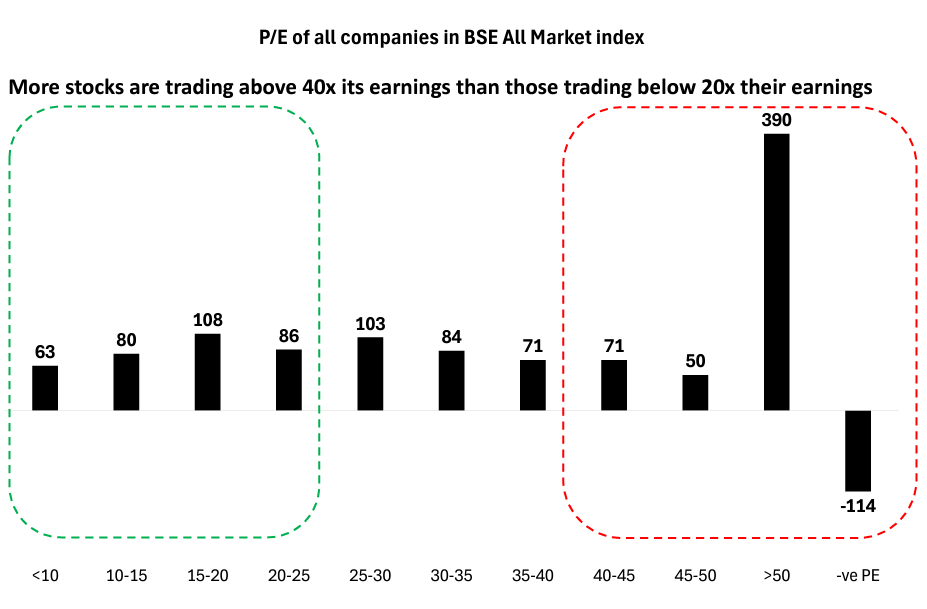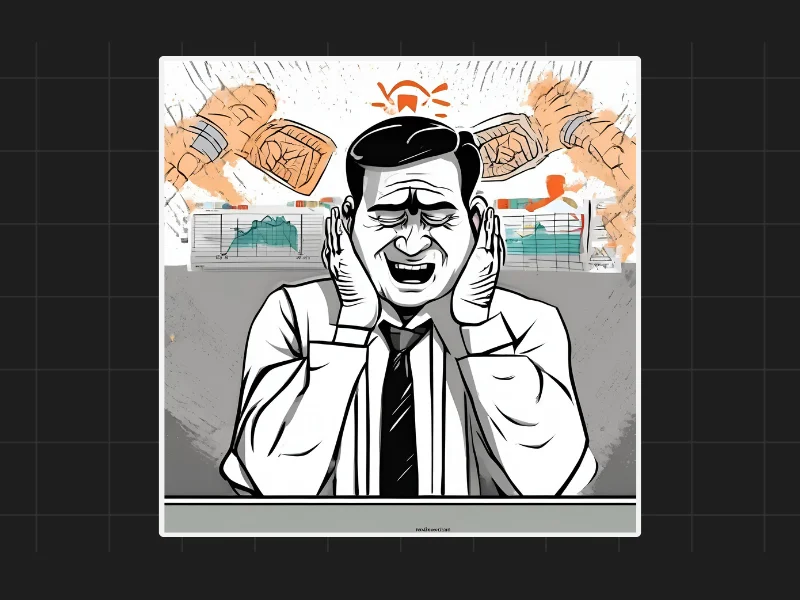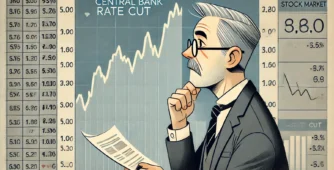A recent analysis sheds light on the current state of price-to-earnings (PE) ratios across a broad selection of companies in the Indian stock market. With data from over 1200 companies in the BSE All Market Index, the study categorizes these firms based on their PE ratios. What’s interesting is that while a fair number of companies show moderate PE ratios, there is a large chunk of companies with very high PEs.

PE Ratio Distribution Across Companies
The chart reveals that around 300 companies have PE ratios below 25, while about 250 companies fall in the 25 to 40 range. However, the significant part of the chart shows more than 500 companies with PE ratios above 40. Additionally, there are 114 companies with negative PEs, indicating that they are not profitable at the moment. Compared to historical data, this distribution skews towards the higher end, but what do these numbers really mean for investors?
High PE Ratios: Risk or Growth Potential?
While high PE ratios can often be seen as a warning sign from a traditional angle, they don’t always spell trouble. A lot of high-growth companies tend to have higher PE ratios. For instance, out of the 500+ companies with PEs over 40, some may indeed be poised for strong future growth, while others may not be sustainable in the long term. Just because a company has a high PE ratio, it doesn’t automatically make it a poor investment. It’s essential to differentiate between genuine high-growth stocks and those whose valuations might collapse if the market turns.
PE Ratios Alone Don’t Tell the Full Story
It’s important to remember that PE ratios, while informative, don’t give a complete picture of a stock’s potential. High-growth companies, by their nature, tend to have higher PE ratios. Out of the companies with high PEs, many might still be sound investments if they are expected to grow significantly in the future. However, some might be overvalued and could fall sharply during a market correction. Therefore, investors should avoid making decisions solely based on PE ratios without looking deeper into a company’s growth potential and fundamentals.
Market Trends and Cautious Optimism
The current market has shown considerable growth in the past few years, but it’s crucial for investors to temper their expectations for the next three years. There might come a time when the market doesn’t experience sharp declines, but prices could stay within a specific range, allowing earnings to catch up. This phenomenon is called a time correction, where stock prices don’t drop significantly but don’t increase much either. Investors need to be prepared for such periods where growth may slow down, even if there are no major market crashes.
Disclaimers and disclosures : https://tinyurl.com/2763eyaz
If you have any questions, please write to support@weekendinvesting.com













